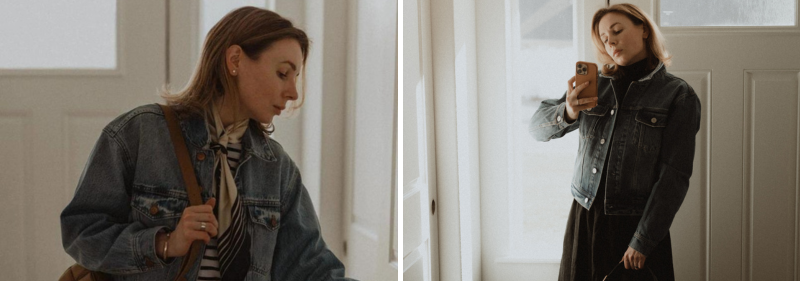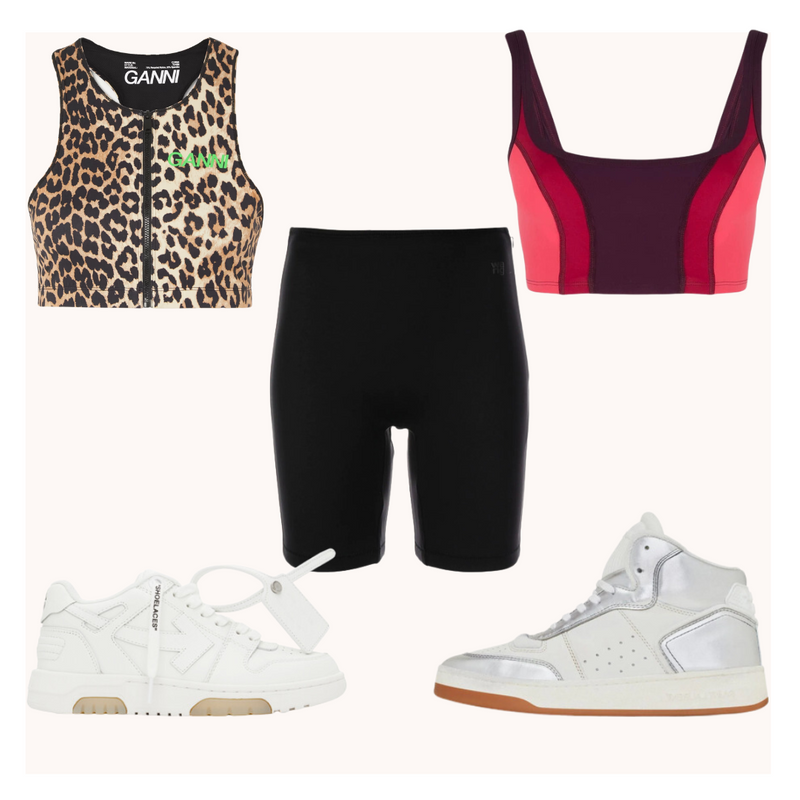So, You Want to Know More About Fashion History?
A syllabus of books, documentaries, magazine articles, and more.

It’s possible to acquaint yourself with luxury fashion solely by listening to hip-hop. Stepping past the black-suited doorman at a Gucci store, placing an order for courageously tapered trousers from Comme des Garçons at SSENSE, or uncovering a piece of Chloé circa Phoebe Philo in a narrow vintage store—these experiences aren’t necessary for one’s entry-level education. For years, my intake of luxury fashion was mediated by artists like Kanye West, Soulja Boy, Pharrell, Clipse, Jay-Z, Young Thug, A$AP Rocky, and Future, to name a few. The rap critic Andrew Nosnitsky wrote that “if you spend enough time listening to rap music, your brain will break, and all of your thoughts will be colored within the lines of the many raps you’ve memorized.” Of course this enfolds the designers scattered among verses like so many bread crumbs, leading the listener to a place where, say, listening to a podcast about Bernard Arnault and the formation of LVMH—the wealthiest and most powerful conglomerate in fashion—will force one to involuntarily recite random lines like Young Thug’s warbled “Christian Dior with the skiiiiiii” from “Offshore.”
At some point, though, you may want to know more about these designers, these brands. The squeaky peaks and husky valleys in Thugger’s expressive delivery can tell you much about the cultural significance—and pleasure—of spending thousands on Margiela. But they won’t tell you who Martin Margiela really is. (As it turns out, that’s a tough question for anyone to answer.) What follows is a syllabus—books, documentaries, magazine profiles, newspaper stories—for everyone who wants to know more about fashion history, not just the people who, like me, have had their brains happily broken by years of rap music. And shout out to our friends @gettyimagesfanclub, one the premier destinations for fashion history photographs on Instagram—the images throughout were hand selected by them.

Robin Givhan, the first fashion critic to win a Pulitzer Prize, is the ideal guide to the history of this splendid, sordid, and weirdly small industry; everyone seems to know each other and the feuds are as glorious as they are ugly. A newspaper journalist, she writes with beautiful economy in her first and only book-length work about the moment in 1973 when American designers proved themselves internationally, scaring the French, who had been the gold standard since the nineteenth century. Expertly paced and structured, answers loads of questions you might have—about how the great fashion houses did business, how that was connected with and the influence of wealthy socialites, along with trenchant observations about Blackness and racism in fashion. In this book she builds a foundation for the rest of your fashion education to rest on. Givhan has a very specific sense of what the medium should be, what style ought to symbolize in the world—and she’s unafraid to put her philosophy into practice, taking aim at politicians and the like. Her takedown of a parka Dick Cheney once wore is an all-time diss, up there with “Hit ‘Em Up.”

Loïc Prigent is a journalist only fashion could produce; he’s unabashedly a fan, an ostensible outsider who moves among catwalks and designers like an insider, armed with his camera and smirking curiosity. His 2007 documentary is unpretentious, silly, at times amateurish, but the film captures moments so honest that I couldn’t help but love it. Like Marc Jacobs ripping a cig in the back of a car driving through Manhattan at night after his New York Fashion Week show has wrapped, looking spent, unsatisfied, even a little lost. He’s juggling his own brand and Louis Vuitton (he launched the brand’s ready-to-wear line in 1997) and the toll the workload takes is clear. The relentless pace of fashion is a hallmark of any contemporary thinking on the subject; here, at least, there’s no unhappy ending.

Meanwhile, Dana Thomas’s thoroughly reported book about John Galliano and Alexander McQueen provides too many depressing codas to count. In the late ’80s and ’90s, the fashion industry transformed from a cluster of family-run businesses catering to a relatively small audience to a globalized, corporatized behemoth that valued growth and happy shareholders, oftentimes at the expense of the artistic pursuit of actualization (and transcendence) through clothing. The two provocateurs, both of whom emerged from London and ascended to great status at established houses, serve as cautionary tales about ego, excess, and the fragility of success. Heroin smoked during dinner, a lit cigarette snuffed out in a dish of expensive hotel caviar, bags of priceless garments lost during a night partying— is bursting with mind-boggling images and anecdotes, like taking on a fire hose of lunatic gossip. On the final page, Thomas draws a brutal conclusion about the state of the industry circa 2015, writing, “There is no poetry. No heart. No angst. It’s just business.” She writes that the new generation of designers has learned from the very public mistakes of the past—and then quotes Alexander Wang as one such example.


One of the pleasures of book-length nonfiction is the bibliography. The nested references to primary sources within the text—the show reviews, profiles, and obituaries—point the way to new internet rabbit holes to fall down. Reading sent me tumbling into the archives of Cathy Horyn, the fashion critic at the from 1998 to 2014. (She’s now the critic-at-large for The Cut.) Her piece on Galliano’s bigoted tirade and his subsequent dismissal from Dior and his namesake brand is illuminating and unsparing. In it Horyn reveals that Galliano is the only designer she’s granted a standing ovation; and for“Everything Is Beautiful,” one of his more controversial collections, no less. Thomas brands the show, which featured atypical models, problematic, writing, “his message devolved into a carny-like pageant, embarrassing and insulting to those he was trying to honor.” I love it when critics disagree.Among other classics, Horyn also wrote an indispensable piece on Raf Simons in 2005, full of lovely observations and humanizing details about the influential Belgian designer so celebrated by A$AP Rocky and other musicians. (Few designers have brought the cool of popular music into their work the way Simons has.) Witness him eating Doritos by the seashore in Belgium. Imagine the cheese dust on his fingertips. Wild stuff.

There are magazine profiles and then there are profiles. Consistently brokering the best, most comprehensive access, writers at The observe the lives of their subjects more intimately, and for longer periods of time, than other journalists. Their stories run thousands of words longer and allow for displays of literary style that other outlets would hush. I’m a fan. Judith Thurman’s magisterial 2005 profile of Comme des Garçons’s Rei Kawakubo opens with a moment where she recalls the Kawakubo-designed wedding dress she wear. It’s a slightly askew lede, perfectly suited to Kawakubo’s singular style.And then there’s Hilton Als’s dive into the wondrous life of Vogue editor André Leon Talley, an inimitable presence who will continue to be a touchstone even in death. (He shows up frequently in memes; you’ve seen the one where he’s “starving for beauty,” which I only recently discovered comes from his appearance in the 2009 documentary chronicle of Anna Wintour’s power, .) In this story, published in 1994, Talley is a quote machine no matter the circumstance—delighting in the retainer worn by a dancer at an all-male nude revue, destroying neat stacks of papers atop his desk, or summarizing the job of a fashion magazine: “They are monthly ventures that should amuse and earn money by showing how money can be.” A lesson for us editors, maybe.And don’t forget the SSENSE editorial archive, where there are stories on designers like Marc Jacobs and Grace Wales Bonner, along with interviews with emerging designers from around the world.




